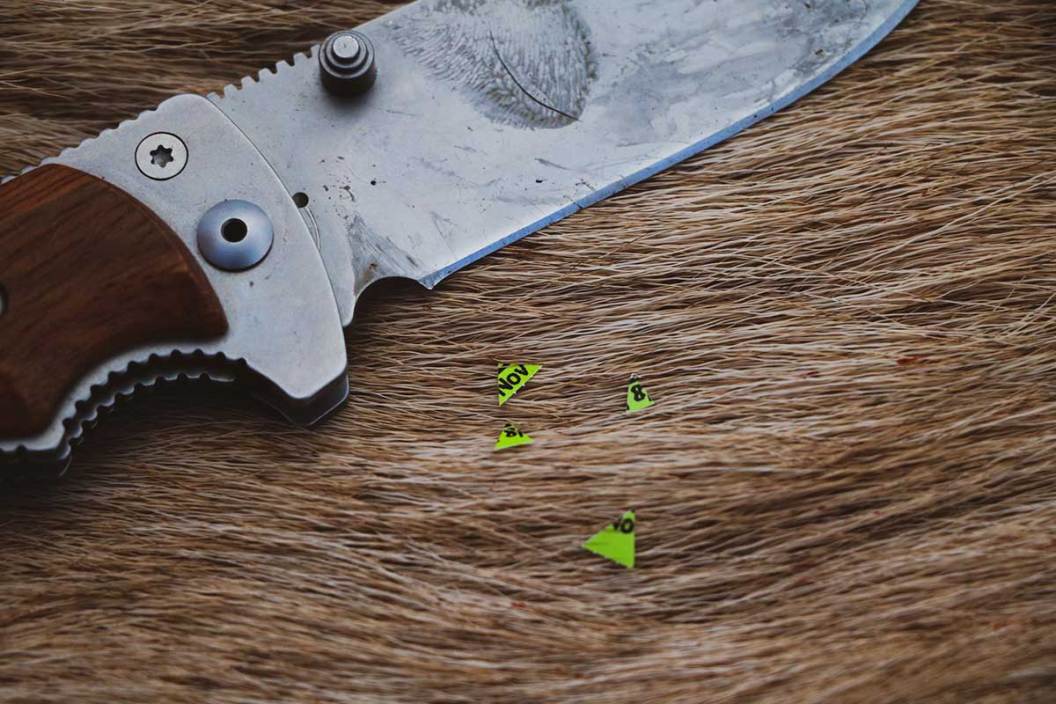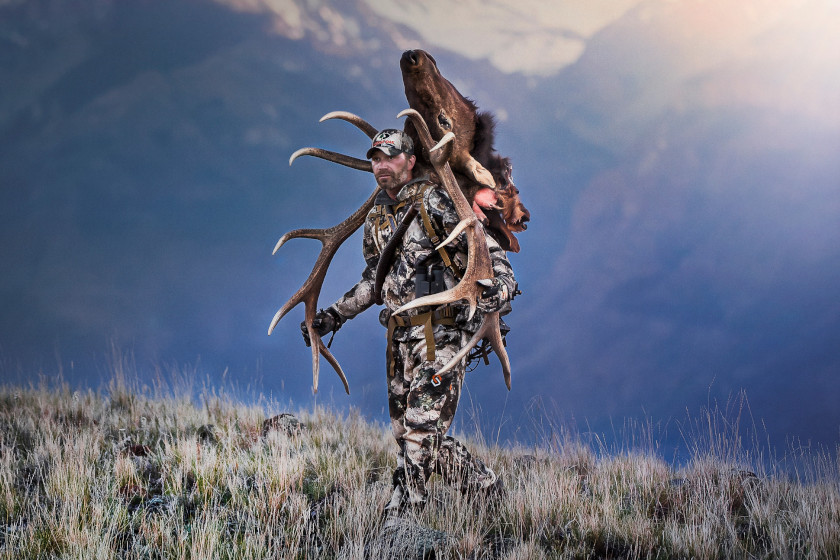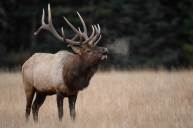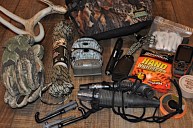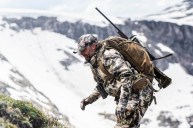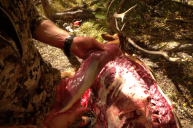If you're used to hunting whitetails, you might think that field dressing and packing out elk will be similar. I'm here to tell you that you can delete that idea. Getting a bull elk down in the wilderness is slightly different from shooting a whitetail out in a cornfield, and the work involved field dressing and breaking down a large bull or cow can be an eye-opener. Believe me, putting elk meat in your backpack in the field and hiking it out is much easier said than done. Elk quarters are heavy, the hides are very thick, and their antlers can weigh over 20 pounds each. Field butchering your elk will be more manageable with the right gear. Here's what you need to break down your elk before you pack it out of the backcountry.
Sharp Knives
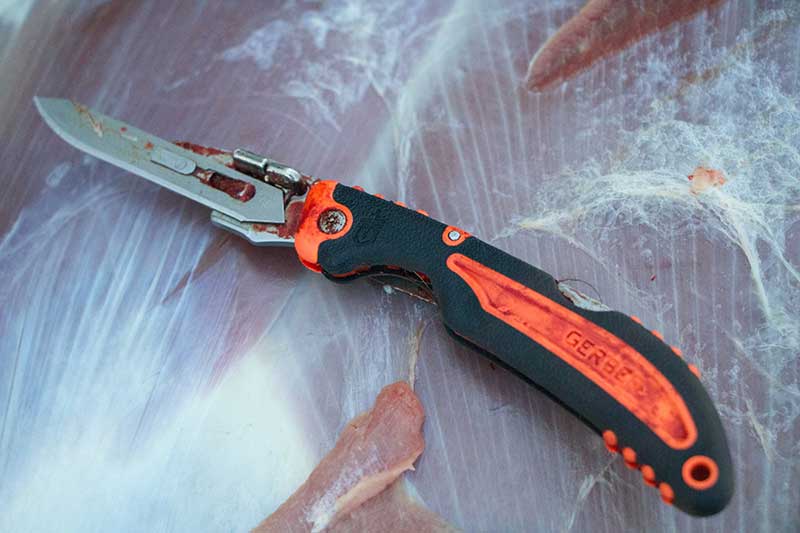
Gabriela Zaldumbide
Multiple sharp knives are some of the most important things you should have in your backpack. Based on my experiences, it's likely that one blade will become incredibly dull just during the skinning process. Bring at least two fixed-blade knives, so you have a sharp one for the hide and another for quartering. I've permanently switched to knives with replaceable blades for butchering elk in the field. It lightens the weight in my pack and ensures I'll always have a sharp knife in my pocket.
Consider adding a bone saw to your pack, too. It's not too hard to remove the skull with a knife, but saws can save time if you're in a hurry. You can also remove the skull plate with antlers attached with a saw if you're not interested in Euro-mounting the elk skull. I know some folks keep them in their packs so they can cut elk ribs or remove the foreleg from their quarters. When it comes to ribs, I usually slice those long rectangles of meat out with my knife and add them to my grind pile.
Game Bags and Paracord
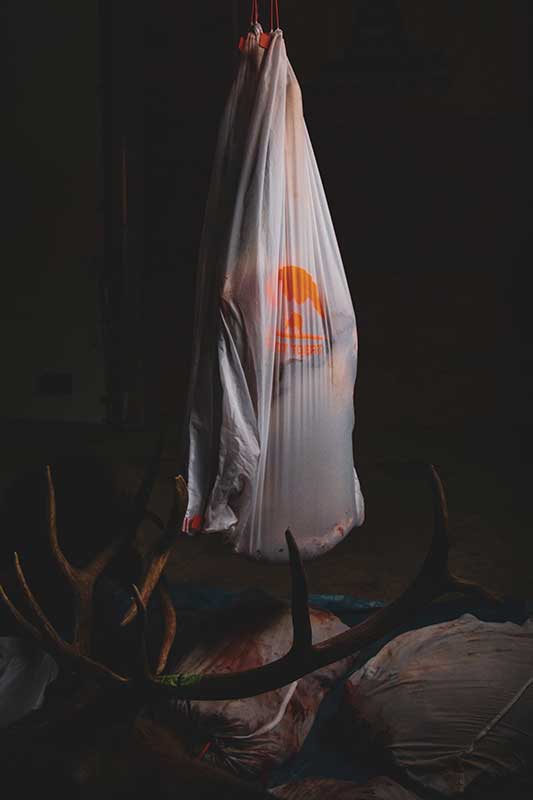
Gabriela Zaldumbide
After quartering up your elk, it's time to hang your meat. This step is essential, especially if you shoot an elk far away from the trailhead. Hanging your meat will help it cool down faster, give it access to increased airflow, and keep it out of coyote bellies while you pack out other quarters.
You'll need five game bags and some paracord to hang your elk quarters. You'll want a game bag for each quarter and another for your backstraps, tenderloins, neck meat, organs, and other meat chunks you're interested in packing out. If you want to take the hide, I'd recommend bringing six bags. Game bags will help keep bugs and debris off your elk meat, keeping it clean and stopping maggots from forming on it. High-quality game bags will look like pillowcases and have a very tight weave. I know folks who use old pillowcases as game bags because they can work reasonably well. Cheaper, more open-weave fabrics can let in dust and bugs, ultimately decreasing the quality of your elk meat. Find one that fits your budget and has high customer ratings.
Some game bags come with paracord already attached to them. Others will need some extra p-cord to close them up and provide a place to tie them to a tree branch. I always bring extra p-cord in case the cord on my game bags is too short to reach the nearest branch or if I need to hoist them up pulley-style so they're up and out of the way.
Backpack Liner
Backpack liners can be as simple as a trash bag, which is what I use myself. They keep blood from dripping from the bottom of my game bag out into my backpack. However, remember that trash bags aren't breathable, and the total time your elk quarters spend in a trash bag should be minimized. As soon as I get to the trailhead, I remove the elk quarter from my pack's trash bag and either stick it straight in a cooler or hang it up in the shade again while I return to retrieve the rest of my elk.
Headlamp
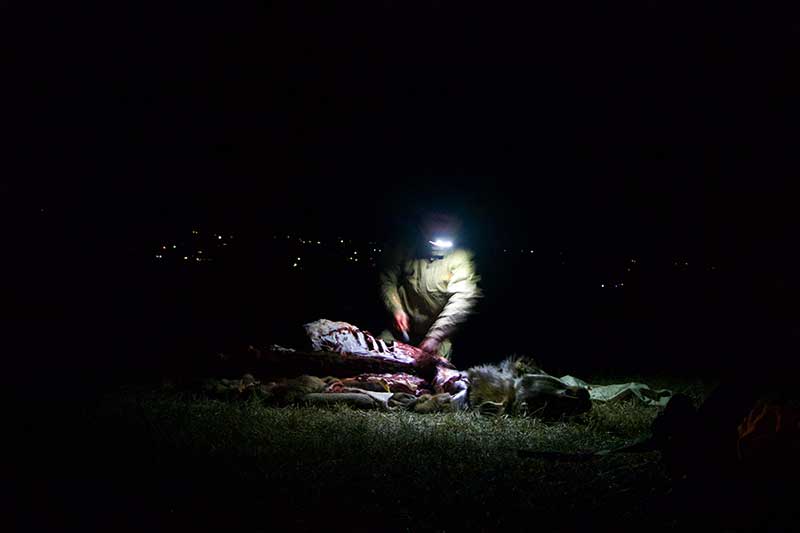
Gabriela Zaldumbide
You never know if you'll get stuck out in the dark when elk hunting. Field butchering an elk can take as long as three hours, especially if you've never done it before, if you're alone, or have a dull knife. The first time I ever butchered an elk, it took us about that long to break down a small bull. By the time he was quartered and hung, it was already 7:00 p.m., and we were losing daylight quickly. It took us several dark, chilly hours to get back to the trailhead, which was 5 miles from where the elk died. When all was finished, we didn't get home until 1:00 a.m. Thankfully, our headlamps lit the way for us.
Latex Gloves
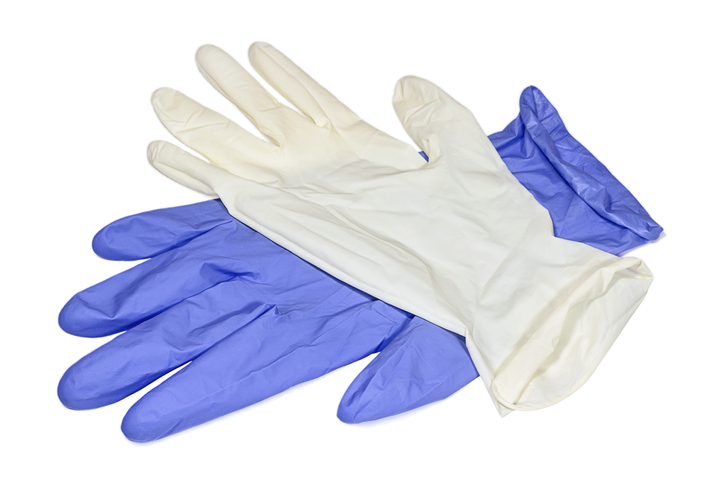
Keeping latex gloves in your backpack is a good idea, and I started stashing gloves in my pack this year after getting tired of scraping out elk blood from under my fingernails. Gloves will go a long way in helping keep your hands and your elk meat clean. Plus, they add barely any weight to your pack. They're handy to have in case of emergency medical situations, too. Speaking of which...
First-Aid Kit
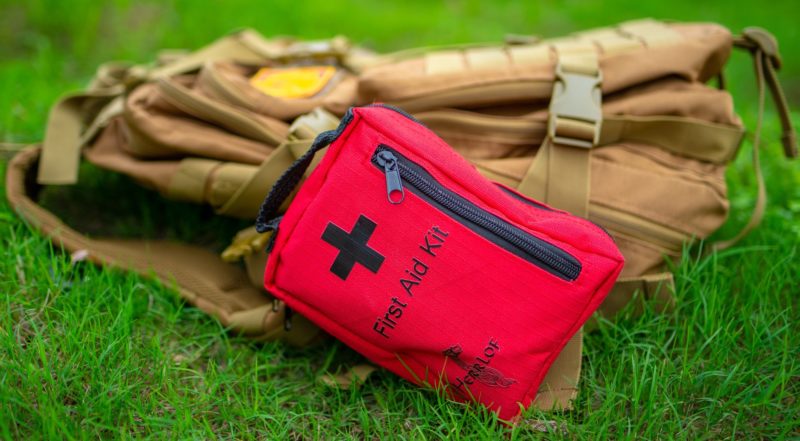
By now you should know to always pack a first aid kit when hunting. It's easy to knick yourself with a knife or experience a more severe accident when you're butchering an elk on a steep hillside, possibly even in the dark, in the snow, or both. Don't leave it in the truck, especially if you've got knifework to do.
Butchering elk in the field isn't an easy task. However, with the right equipment, you can get it done in just a few hours. When you take that first bite of backstrap, you'll be glad you took the time to cleanly and carefully quarter out your elk.
